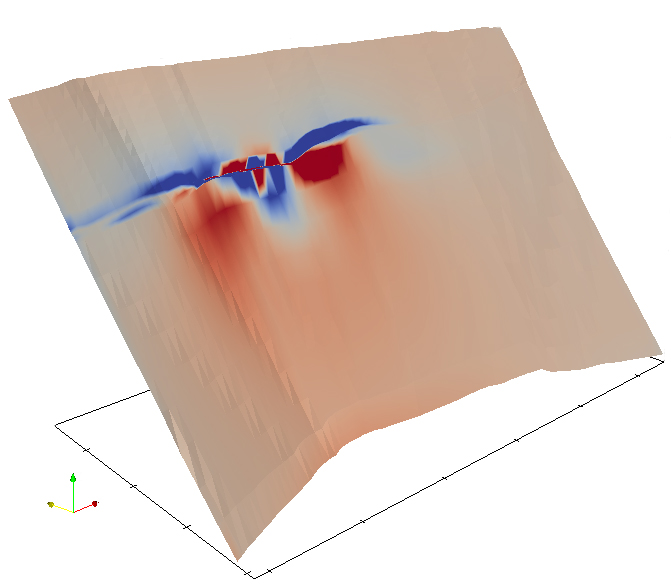Geomechanics integrates rock mechanics, geophysics, fluid mechanics, and geology to quantify the state of stress and variations in stress in the subsurface. Rocks deform in response to tensor stress, fluid pressure, and temperature by a number of mechanisms, including elastic, plastic, viscous, and brittle deformation. Deformation can be distributed or localized (e.g., faulting), and can occur stably or unstably, resulting in seismic activity. Deformation and fluid flow can change the state of stress, resulting in a number of interesting and important feedbacks. At ERL, we develop quantitative geomechanics models and constrain them with multiple kinds of observations to improve our understanding, prediction, and control of subsurface processes.
See people who work in this area

Image from "Coupled flow-geomechanics modeling assessment of the 2012 Emilia-Romagna earthquakes" by R. Juanes, B. Jha, B. H. Hager, J. H. Shaw, A. Plesch, L. Astiz, J. H. Dieterich, C. Frohlich.